We know that flowers should be allowed to recuperate from the strenuous work of attracting pollinators, but we also acknowledge the effect of long-blooming plants.
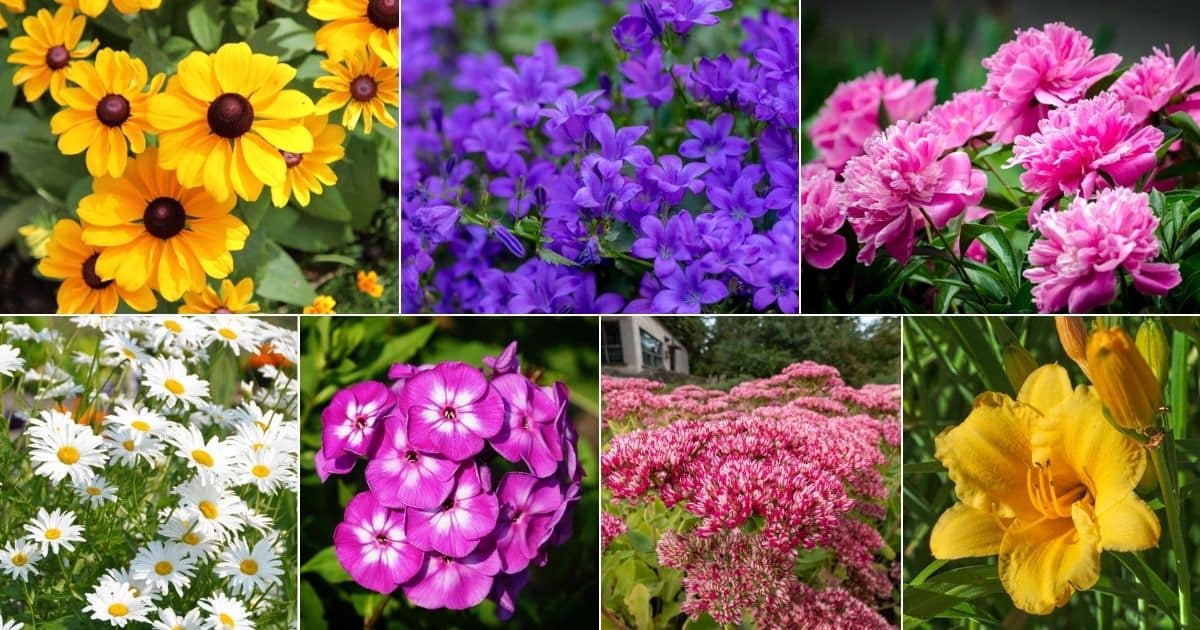
Perennials have one significant advantage, and that is the fact that they are reoccurring plants, saving you the time and energy of planting again every spring. However, their downsides are that compared with annual plants, they bloom for shorter periods.
Our goal with this article is to point you in the direction of long-blooming perennials that you can plant to keep your gardens shining for longer.
Please find below a compilation of perennial flowers that bloom from spring to fall, retaining the bright look of your garden from the end of Winter frosts till they're back again at the year-end.
Jump to:
- Perennial Flowers That Bloom From Spring To Fall
- 1. Perennial Salvia
- 2. Yarrow (Achillea millefolium)
- 3. Threadleaf Coreopsis
- 4. Black-Eyed Susan (Rudbeckia hirta)
- 5. Garden Phlox (Phlox paniculata)
- 6. Stella de Oro Daylily (Hamerocallis 'Stella de Oro')
- 7. Dalmatian Bellflowers (Campanula portenschlagiana)
- 8. Fringed Bleeding heart (Dicentra eximia)
- 9. Red Hot Poker (Kniphofia uvaria)
- 10. Spiked Speedwell
- 11. Catmint (Nepeta racemosa)
- 12. Autumn Joy Stonecrop
- 13. Butterfly Bush
- 14. Coneflower
- 15. Ice plant (Delosperma cooperi)
- 16. English Lavender (Lavandula Angustifolia)
- 17. Russian Sage (Perovskia atriplicifolia)
- 18. Becky Shasta Daisy (Leucanthemum x superbum 'Becky')
- 19. Peonies
- 20. Asters
- Conclusion
Perennial Flowers That Bloom From Spring To Fall
1. Perennial Salvia
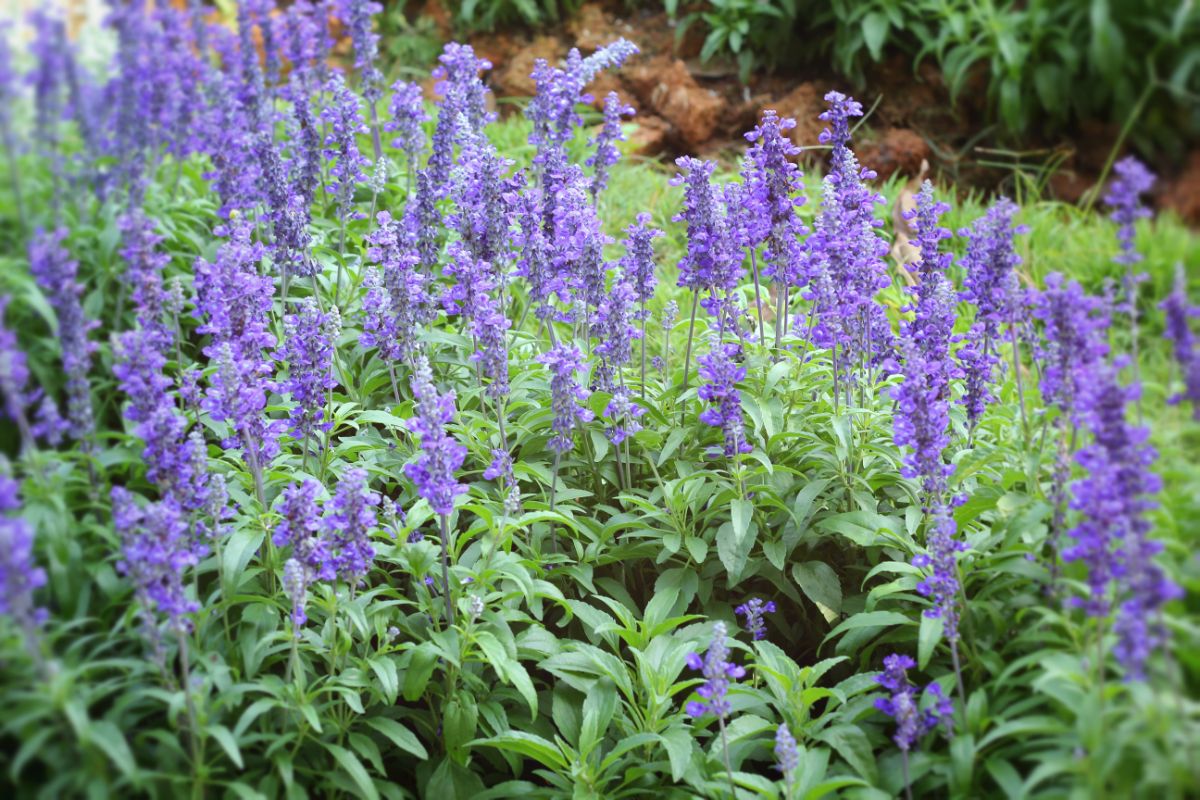
Comprising of annual plants (Salvia splendens) and perennials (Salvia nemorosa and co.)
The perennial genus of this plant is one long-blooming one. The key to a prolonged blooming includes consistent deadheading.
Salvias are generally low-maintenance plants. They thrive best under well-drained soil with medium or dry moisture and total sun exposure.
They are available in color variants of blue to violet and are hardy in zones 4 - 10.
With the right conditions in place, the plants can get up to 2ft tall and flower for several months, with the duration varying from one specie to another.
2. Yarrow (Achillea millefolium)
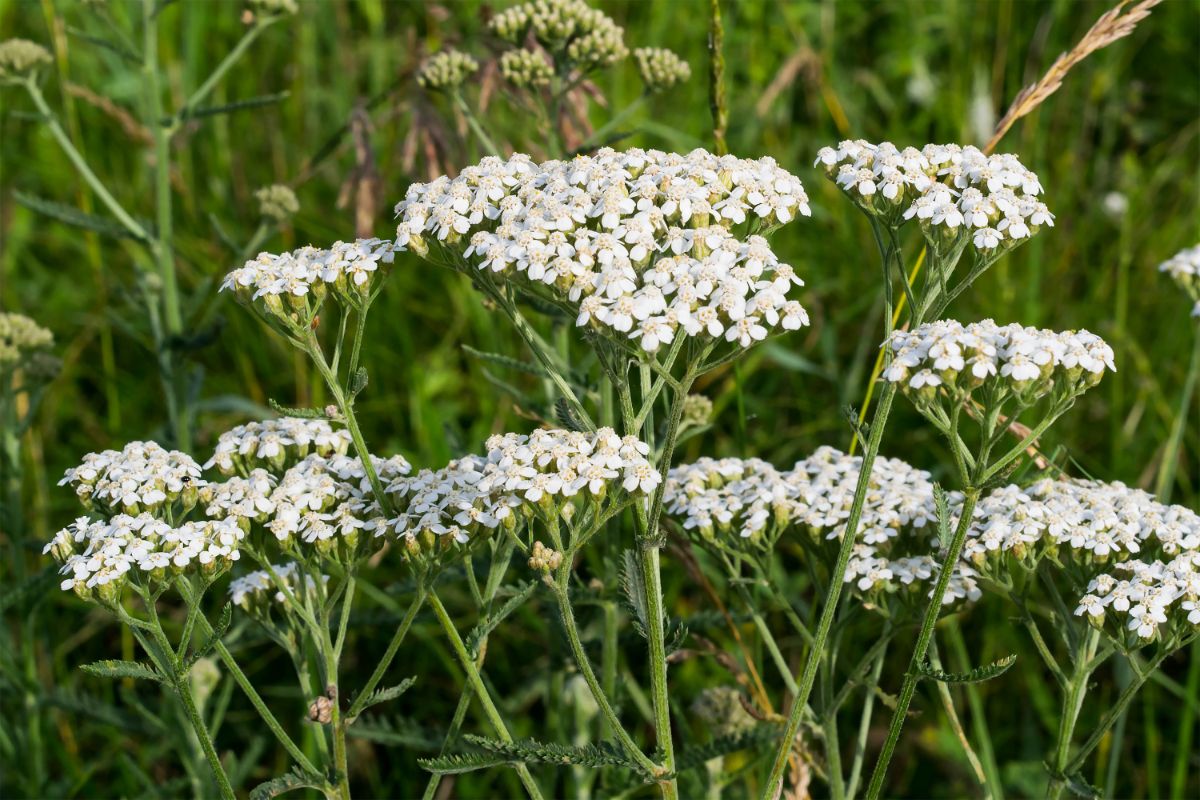
You are treated to some bright white clusters of flowers with this plant, with other cultivars bearing flowers in different beautiful colors.
Yarrow plants are sometimes used as ingredients for some medicinal preparation, but we will not concern ourselves with that.
Instead, we are focusing on the long blooming period of this herbaceous plant. They flower all summer from June through to September. You can further prolong the bloom time by dividing the plant every three years at least and deadheading wilt flowers.
Yarrows are available in colors yellow, red, pink, etc. They tolerate drought but prefer well-drained but moist soil.
They are hardy in USDA zones 3-8.
3. Threadleaf Coreopsis
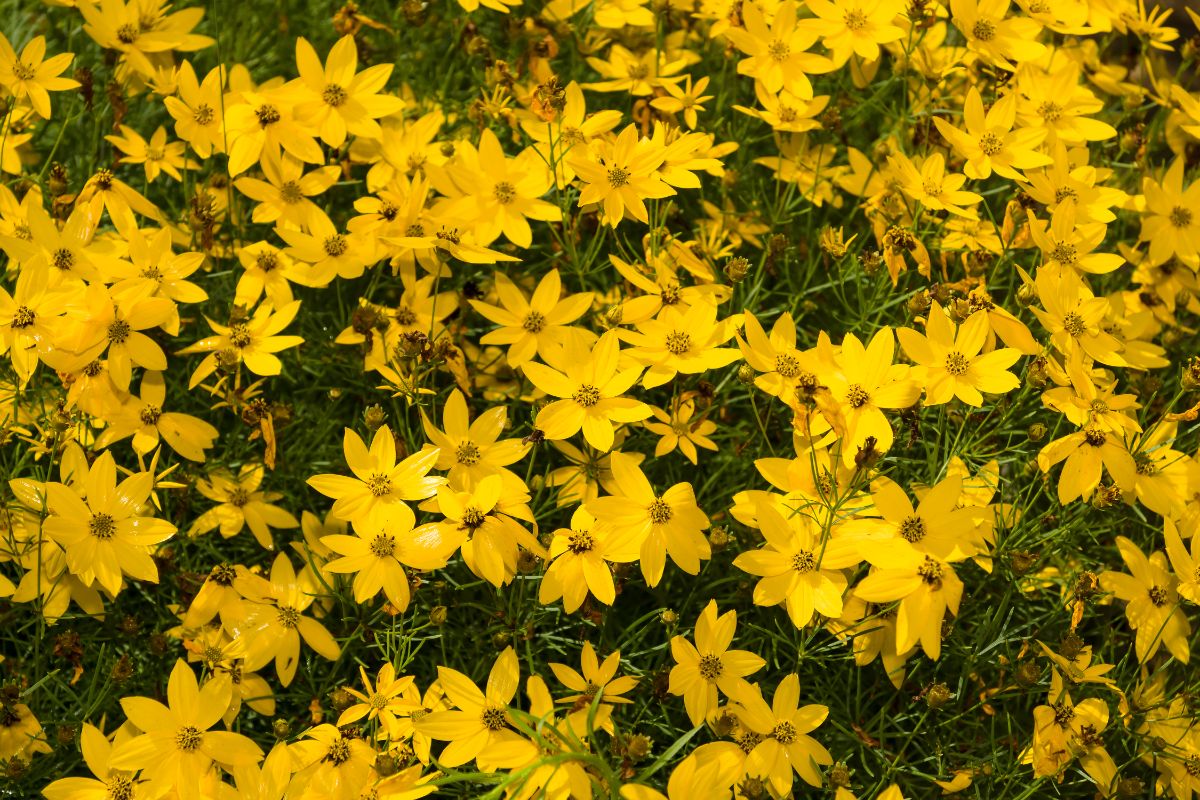
This plant, as well as other cultivars, brings forth small daisy-like yellow flowers that bloom from spring to fall.
To get them to bloom even longer, have the flowers sheared back just after the first flowering period.
The plants are yellow, but you'll find other cultivars to be pink, red, or bi-colored. They thrive in well-drained soil and total sun exposure. They are low-maintenance plants, hardy in zones 3-9.
4. Black-Eyed Susan (Rudbeckia hirta)

Very popular amongst gardeners, this plant is yet another one that blooms from spring to summer.
Get the blooms reoccurring by regular deadheading. This will also show that the plants do not need self-seed.
Black-eyed Suzan has a fascinating yellow-to-orange course with nicely contrasting dark centers.
They like well-drained soil, medium moisture, and full sun. They are hardy in USDA zones 3-7.
5. Garden Phlox (Phlox paniculata)
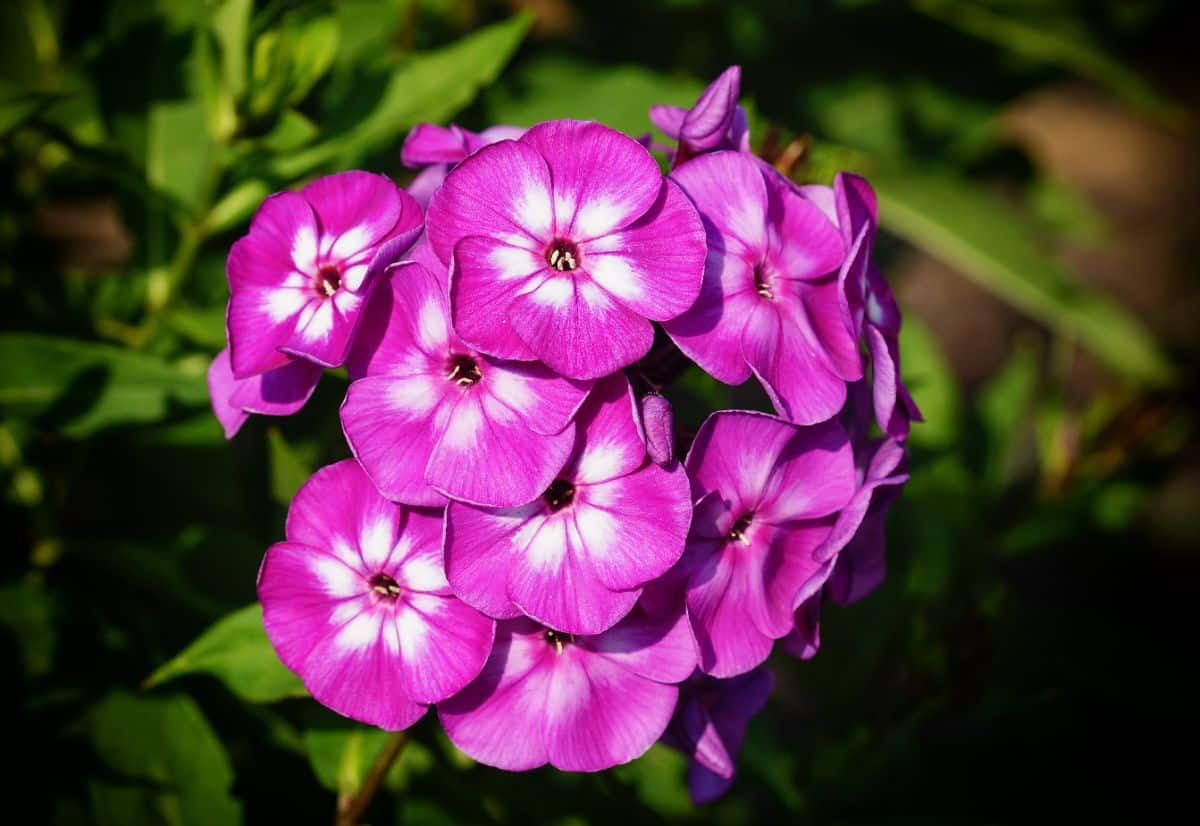
Garden Phlox requires extra care against powdery mildew and some other fungal disease.
With the proper care practices, the plant will go on to bloom from midsummer straight into fall.
For low-maintenance ones, go for the latest plant cultivars, as they are dew resistant with equally eye-catching foliage that looks robust during summer.
The garden phlox are in colors varieties of purple, pink, and white. They thrive in well-drained soil with medium moisture under full sun to part shade and are hardy in zones 4-8.
Quick Tip: To stop the plant from self-seeding, deadhead spent leaves.
6. Stella de Oro Daylily (Hamerocallis 'Stella de Oro')
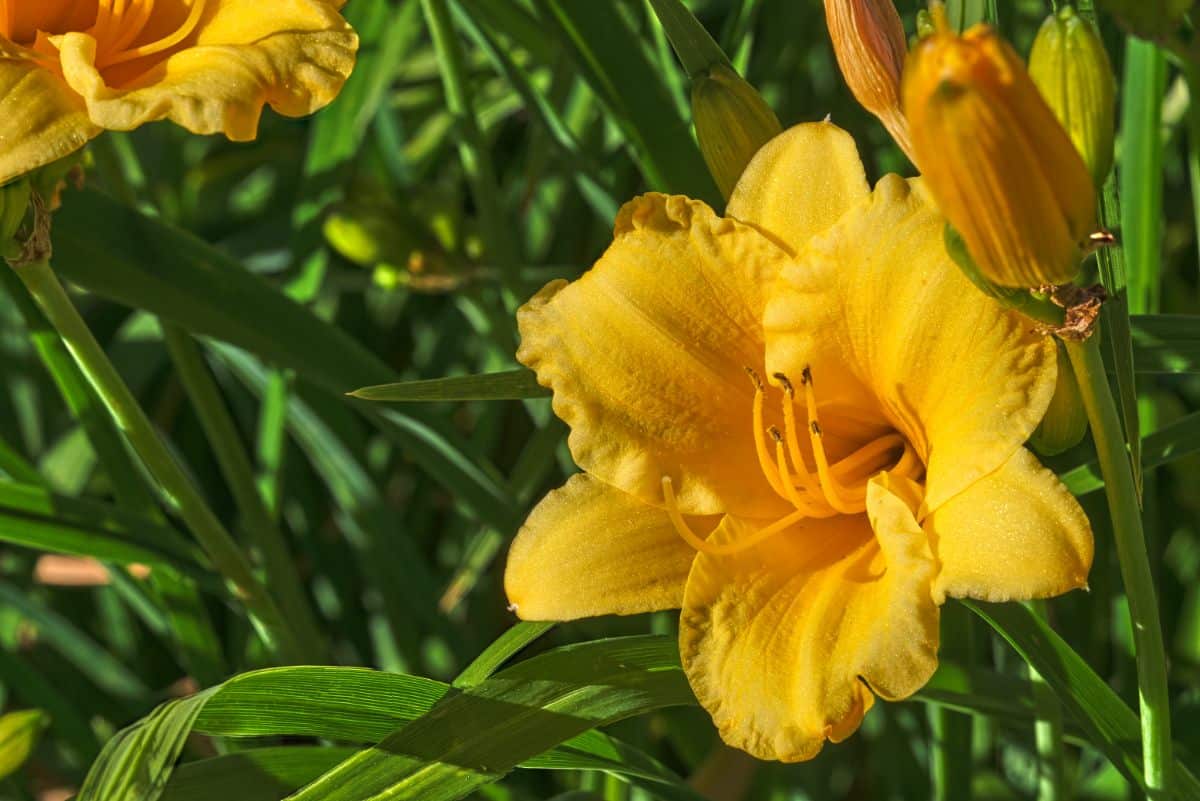
We love the compact nature of this plant.
The Hamerocallis genus has well over 50,000 hybrid cultivars, with Stella de Oro having one of the most extended bloom periods from May - July, even though individual bloom lasts no longer than a day.
The plant requires minimal care and attention. They record an overall height of just 12 inches and are available in yellow, gold, and colors.
Plant in well-drained soil under full sun to partial shade.
Stella de Oro is hardy in USDA zones 3-10.
7. Dalmatian Bellflowers (Campanula portenschlagiana)
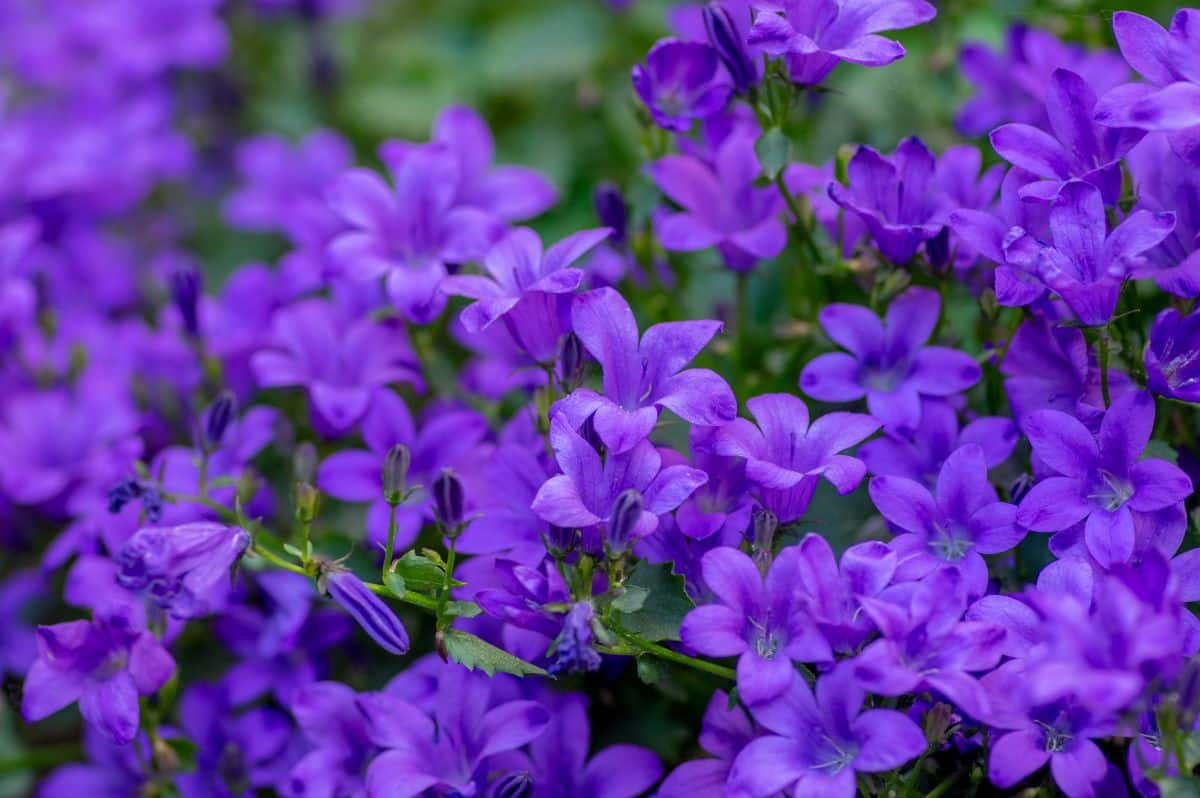
USDA Growing Zones: 3 - 8
This plant falls under the Campanula genus, which has more than 500 species of both perennials and annuals, of which the dalmatian bellflower is the cultivar with the most extended bloom.
These plants are good when used as ground covers or creeping plants over walls. They spread, but that can very well be controlled.
They are in color varieties of blue and violet and thrive in well-drained, medium-moisture soil under full sun to part shade.
Bloom time? From late spring to early summer.
8. Fringed Bleeding heart (Dicentra eximia)

USDA Growing Zones: 3 - 9
This beautiful plant comes in color varieties of white, reddish-purple, and pink.
They have got beautiful fern-like foliage that flowers for up to 3 solid months in their active growing season from late spring to late summer.
With a height of about 18 inches, this plant is a perfect fit for shade gardens. They prefer full sun to partial shade and well-drained soil.
9. Red Hot Poker (Kniphofia uvaria)

USDA Growing Zones: 5 - 9
Also known as the torch lily, the flowers of this plant are tipped red with yellow below. Although, you'll find other cultivars in different sizes, forms, and colors.
Red Hot poker grows 4ft in height. They thrive in well-drained soil under total sun exposure.
10. Spiked Speedwell
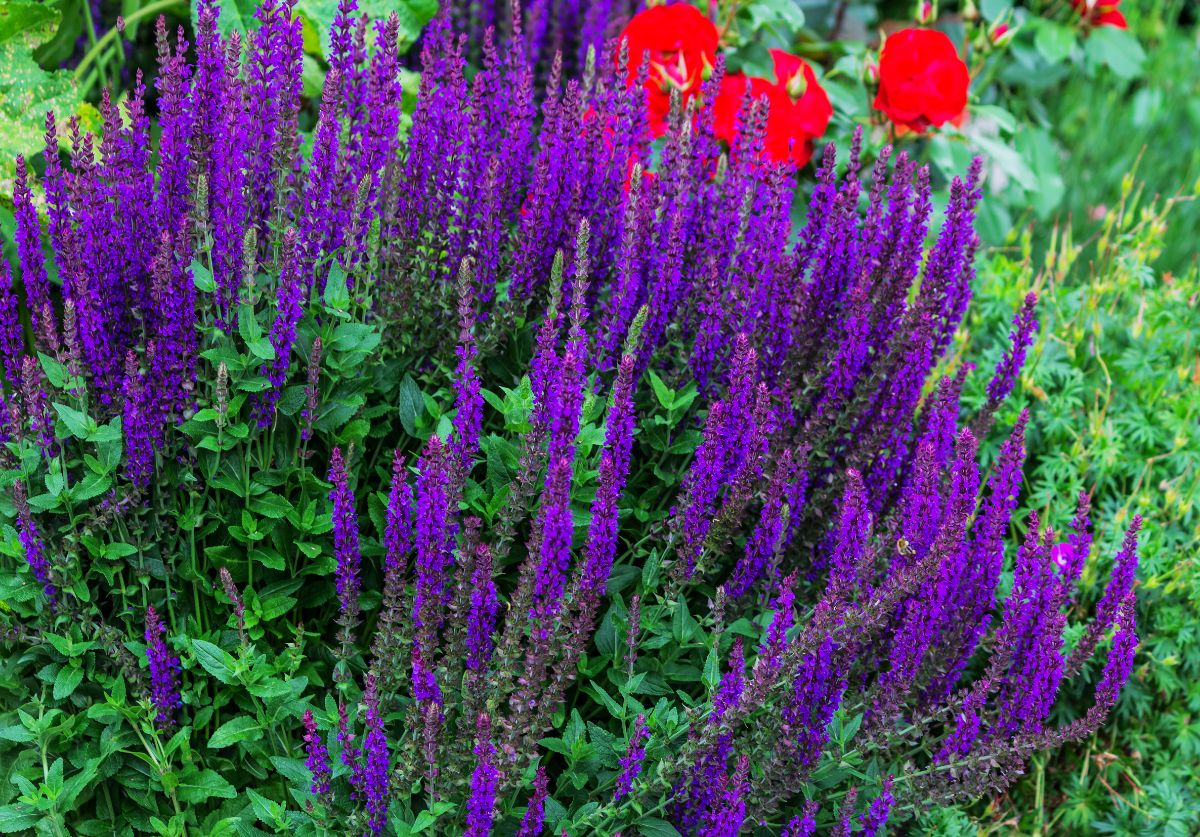
USDA Growing Zones: 3 - 8
Out of the many species of this plant, the Royal candles is singled out as the longest blooming.
Its brilliant blue flowers that stand at about 12 inches tall bloom from June straight into August.
The Spiked Speedwells are available in blue, violet, pink, and white. They prefer full sun and well-drained, medium-moisture soil.
11. Catmint (Nepeta racemosa)
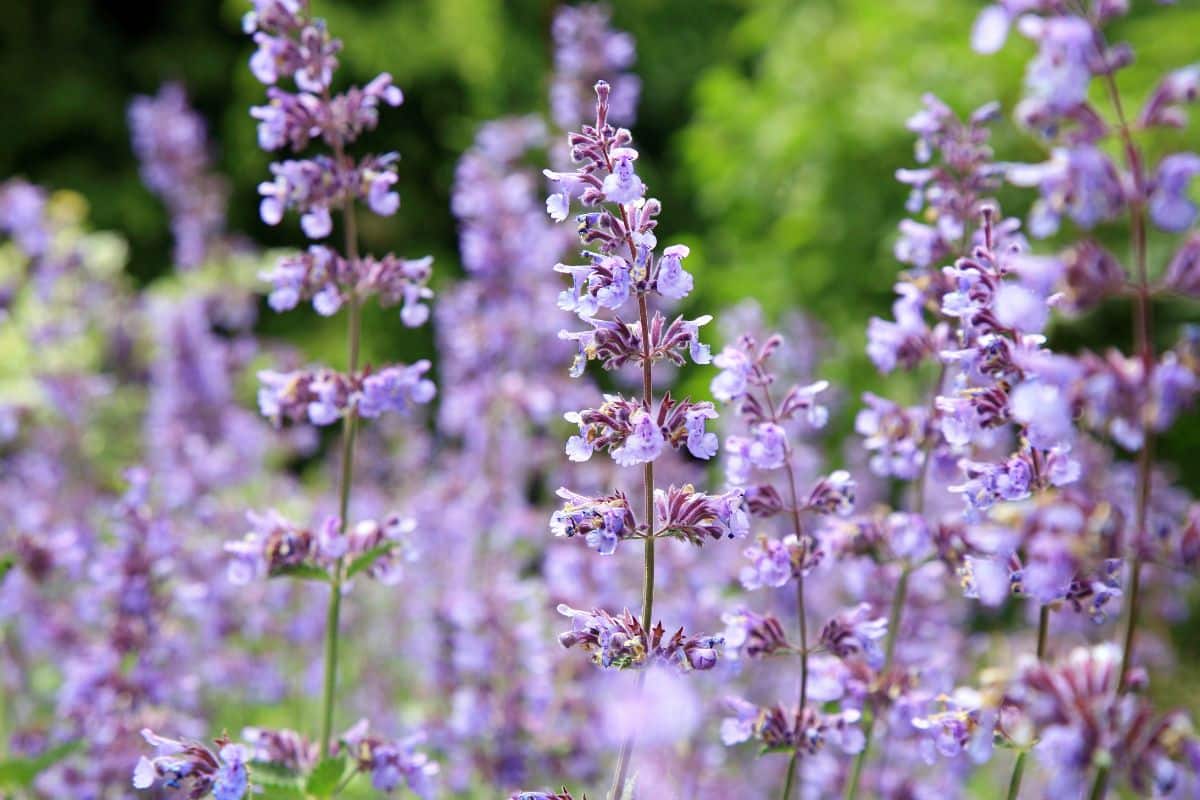
USDA Growing Zones 4 - 8
Catmints are perfect when planted on landscapes or used as ground covers. They grow up to 12 inches.
They have long-lasting blooms bound to reoccur if flower spikes are sheared, especially after the last flush.
They enjoy full sun to part shade exposure and well-drained soil.
12. Autumn Joy Stonecrop
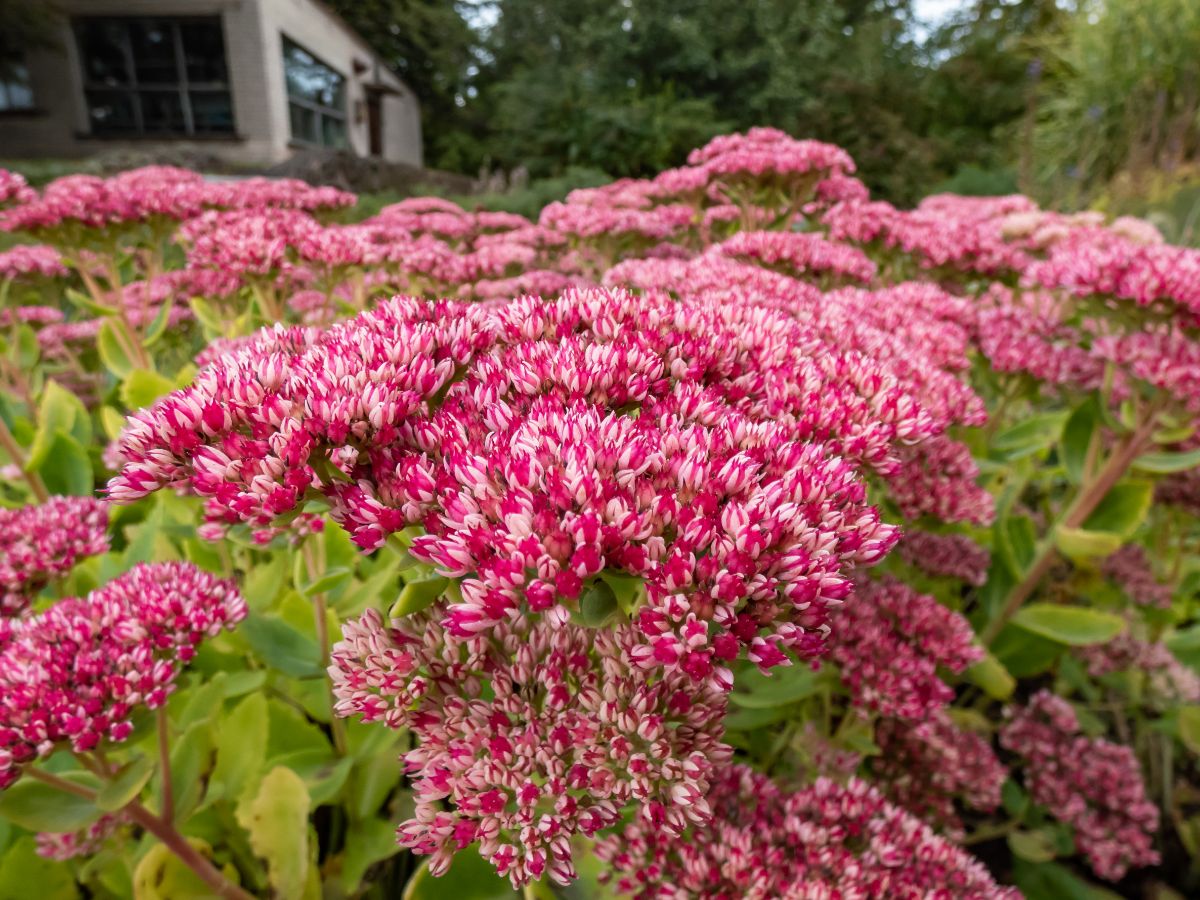
You might recognize this plant as part of the Sedum genus, but it has now been placed under the Hylotelephium Herbstfreude.
We particularly like the large mass of smaller flowers clumped together that the bloom of this plant forms and the fact that the plant in itself is low maintenance.
They prefer total sun exposure and well-drained, dry to medium moisture soil.
13. Butterfly Bush
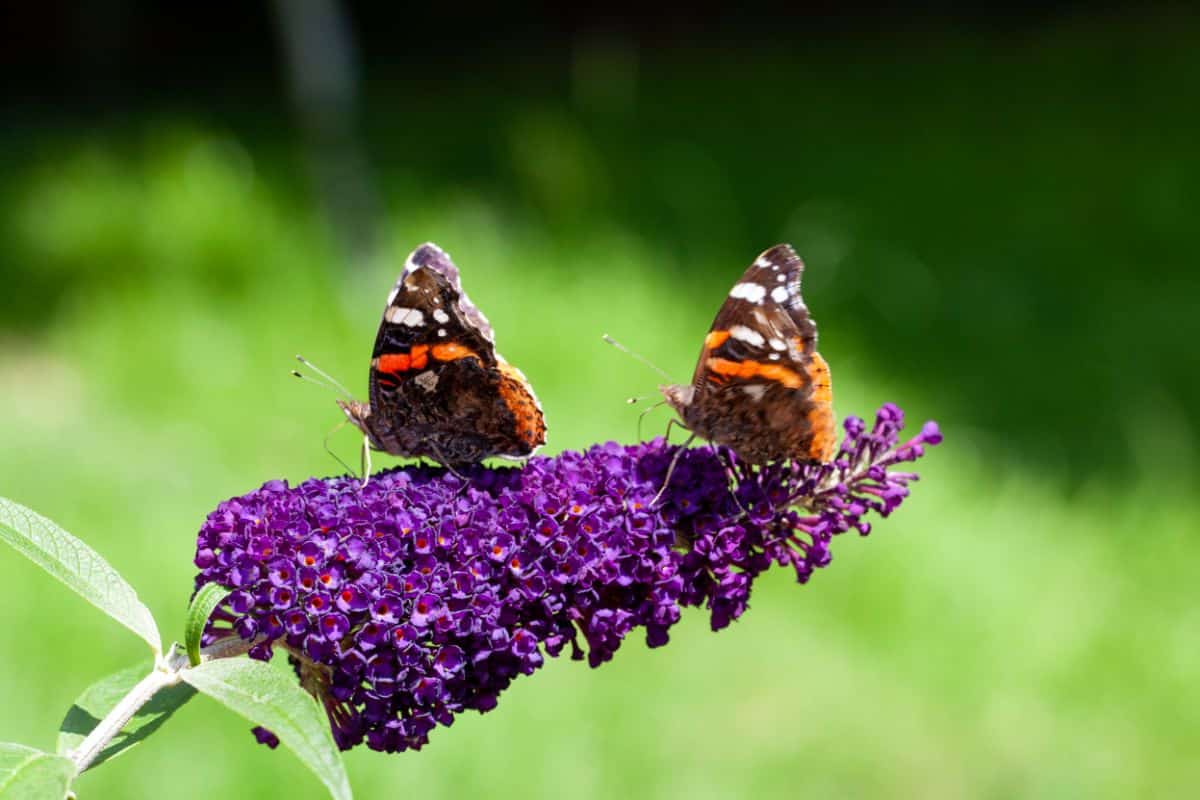
USDA Growing Zones: 5 - 9
It is long blooming from June through to September.
Butterfly bushes are tall flowers, attaining an overall height of 8 feet and more sometimes. However, you can find compact alternatives amongst its many cultivars.
They are available in the colors purple and blue. They prefer full sun and a well-drained medium, moisture soil.
14. Coneflower
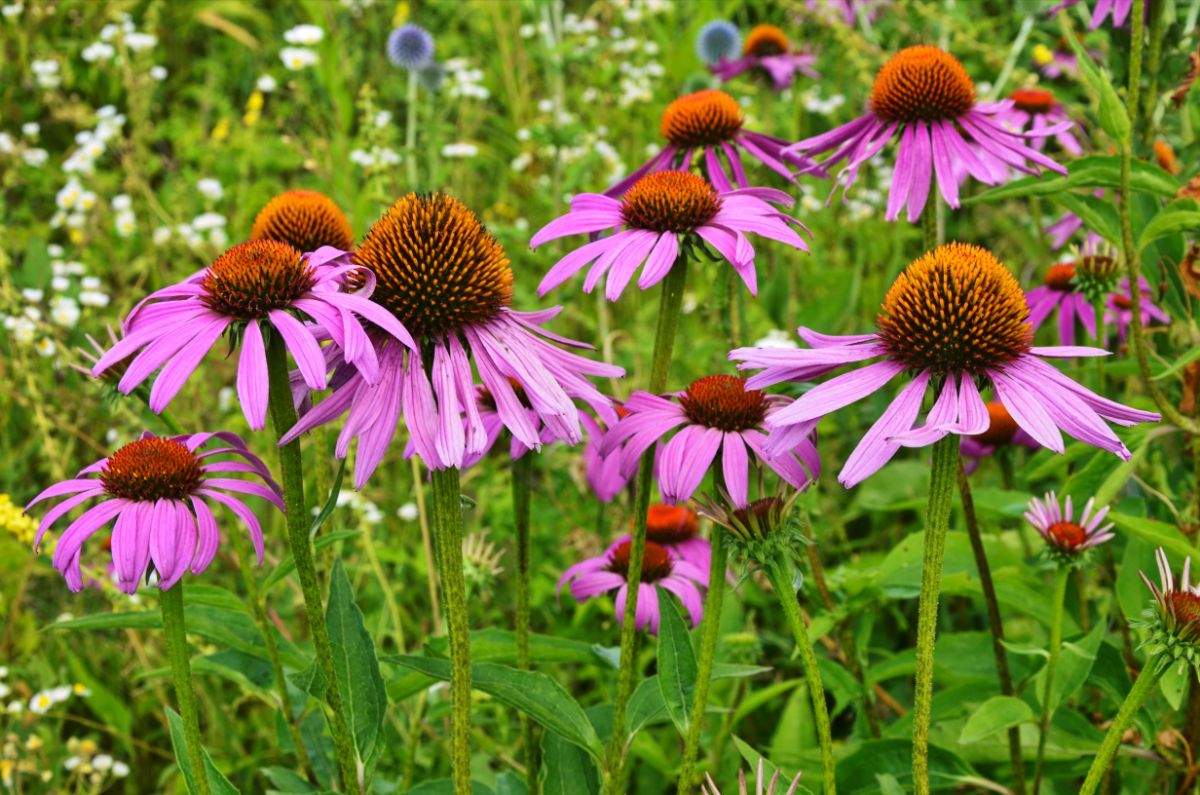
USDA Growing Zones: 3 - 9
It is easy to get confused with the many species in the Echinacea genus that go by the same name, 'coneflower.'
We have the coneflower on our list as they serve us with some visual delight as they bloom from June through August.
They have a height size of about 5ft. Have them established in a well-drained, dry to medium soil and full sun to part shade exposure.
Coneflowers naturally are low maintenance and stay drought tolerant.
15. Ice plant (Delosperma cooperi)
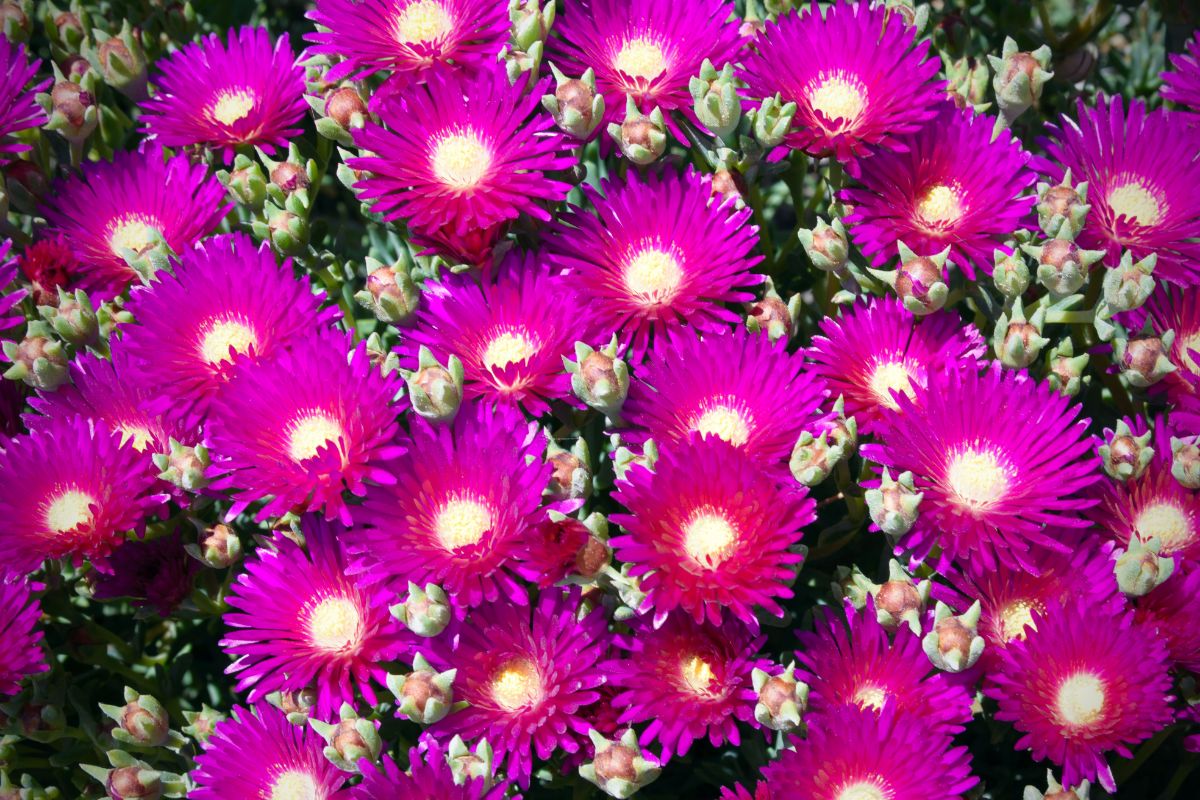
USDA Growing Zones: 5 - 10
This list would have been a massive fail without this long-blooming unique perennial.
They have a height size of about 6 inches with a blooming period lasting from June to September.
Ensure you use well-draining, dry soil and expose the plants to full sun.
16. English Lavender (Lavandula Angustifolia)

USDA Growing Zones: 4 - 9
Asides from the fact that this plant bloom for a long, they fill your garden space with its sweet lavender scent.
The plant has an overall height of about 3ft. To get them to bloom long from June through to August, have them planted in well-draining, dry-medium soil and expose them to full sun.
17. Russian Sage (Perovskia atriplicifolia)
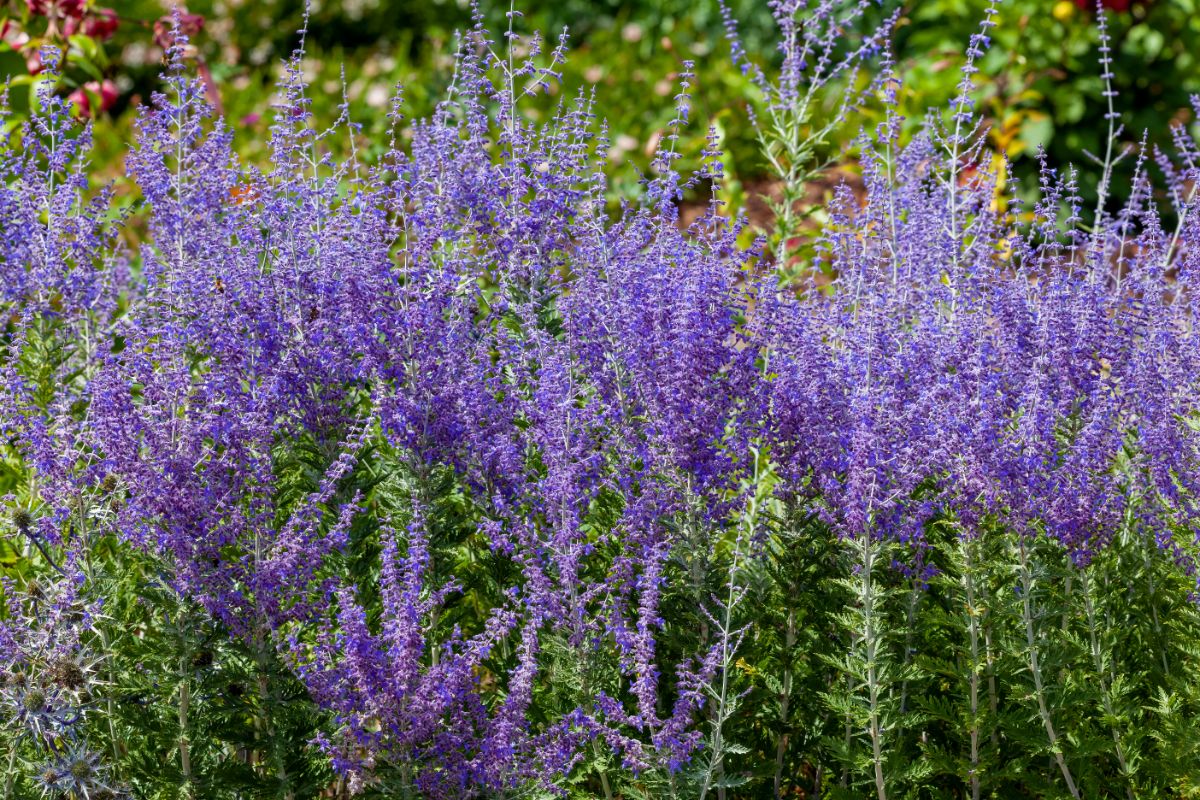
USDA Growing Zones: 4 - 9
The Russian Sage is a tall, long, blooming plant that lasts from July - October.
They are available in Lavender/blue colors.
Like most perennials, Russian Sage prefers well-drained dry to medium soil and total sun exposure.
18. Becky Shasta Daisy (Leucanthemum x superbum 'Becky')

USDA Growing Zones: 5 - 9
Becky Shasta Daisy gives great visual satisfaction anytime, but that's not all there is to it.
Other key features of this plant include low maintenance and highly tolerant of some unfavorable conditions and course, long blooming from July - September.
They have an impressive height of 4ft, thrive best in dry-medium moisture soil, and have total sun exposure.
19. Peonies
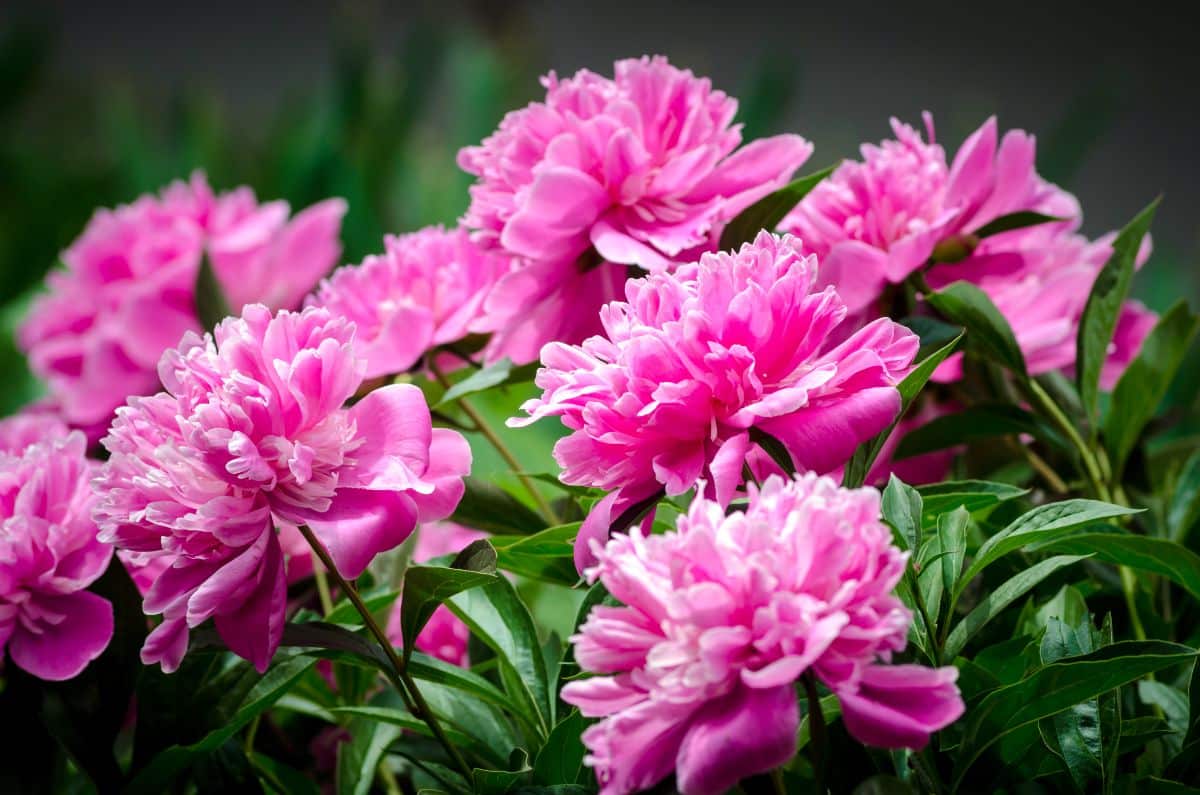
These plants have soft and delicate petals that open up during the day.
Peonies are beautifully pink and red flowers that bloom in May and June.
20. Asters
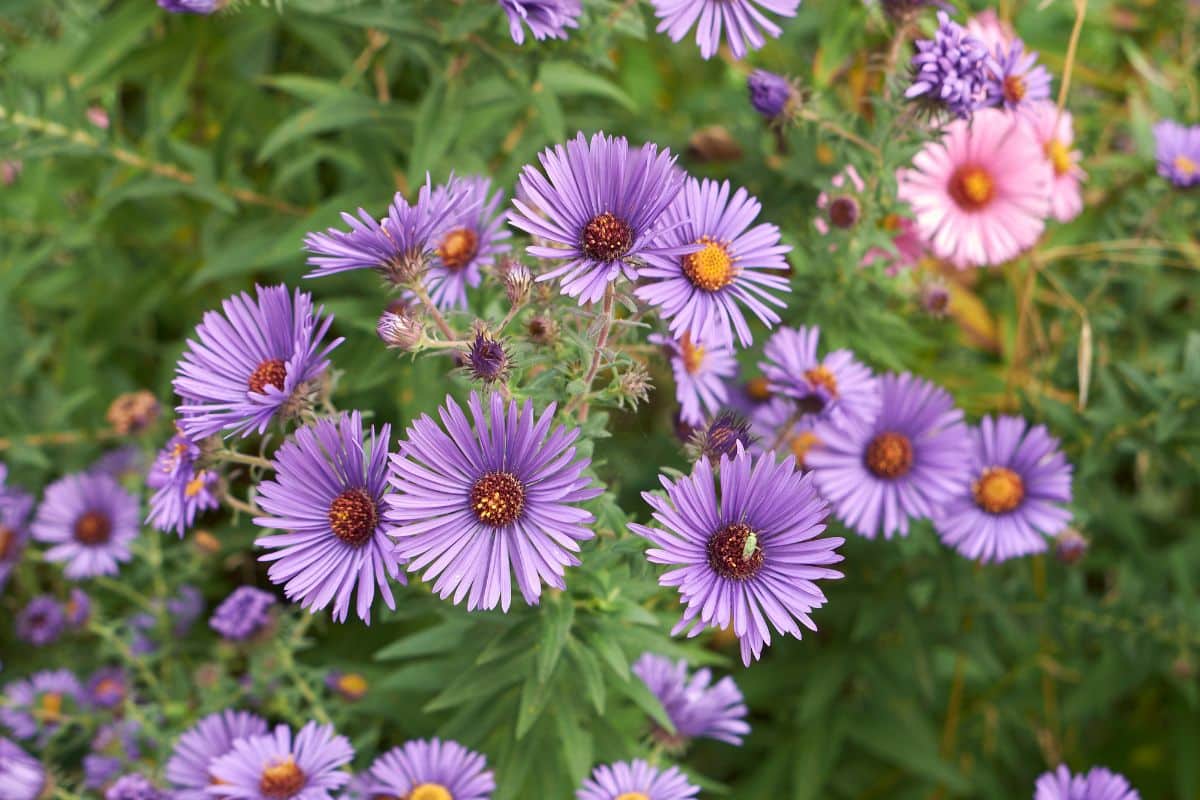
Asters are beautiful flowers in a range of many exciting colors.
They are sun-loving plants that will do great in well-drained soil.
They are best planted in September or early spring and bloom from July all through September.
Conclusion
The great thing about planting flowering perennials is that they can very well be managed by novice and expert gardeners.
An added benefit of planting these flowering perennials is that they return with their radiance every year, leaving your garden space gorgeous.




